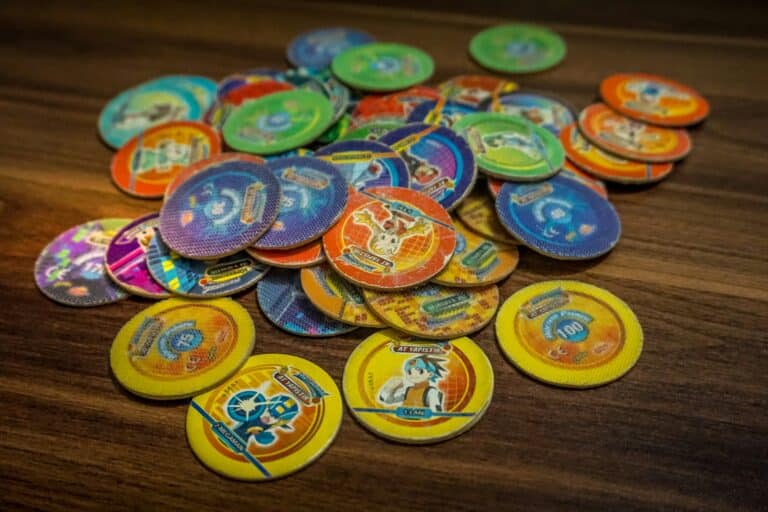🎯 This data point, often overlooked in favour of more immediate metrics like enrolment numbers or user satisfaction, holds the key to understanding and maximizing the real impact of your educational content. But how can course completion scores be effectively harnessed to unlock greater success? 🗝️ This is exactly what we are going to explore in this in-depth article.
The goal of any educational program, online or otherwise, is not simply to enrol students, but to guide them to the finish line: course completion. When learners successfully complete a course, they demonstrate that they have engaged with the material, invested their time, and gained new knowledge or skills. Thus, a high course completion score is a testament to a course’s ability to maintain student engagement, deliver on its promises, and foster meaningful learning. 🎓
Understanding Course Completion Scores
Before we dive into the details of how to leverage course completion scores, it’s crucial to understand what they are and how they’re calculated. Simply put, a course completion score is the percentage of enrolled students who successfully finish a course. Sounds straightforward, right? However, this seemingly simple calculation can be influenced by a variety of factors, from course design and content quality to student motivation and support services. 📊

Understanding these influencing factors is critical to optimizing course completion rates. After all, you can’t improve what you can’t measure. With this perspective, we will shed light on the hidden dynamics behind course completion scores and provide actionable strategies to boost them. But it’s not just about increasing a number. We will also discuss the importance of maintaining a balance between pushing for higher completion rates and preserving the quality of learning. 🧠
Unlock Success: Strategies and Best Practices
How can you maximize results with course completion scores? There are a myriad of strategies and best practices that can make a big difference. We will delve into these in the main body of this article, providing practical advice and insights drawn from the latest research and industry trends. From designing engaging and accessible course content to implementing effective student support systems, we will cover a wide range of tactics that can help you unlock success. 💼
And, we won’t stop at theory. We will also present case studies from leading educational institutions and e-learning platforms that have successfully leveraged course completion scores to drive improvement and innovation. These real-world examples will offer valuable lessons and inspiration, proving that maximizing course completion scores is not only feasible but also highly beneficial. 💡
In the dynamic world of e-learning, staying ahead of the curve requires continuous learning and improvement. As we navigate this intricate journey together, our ultimate goal is to empower you with the knowledge and tools to make your online courses more effective, engaging, and successful. So, buckle up and let’s embark on this exciting exploration of course completion scores, and how they can unlock new heights of success in digital learning. 🚀
Unlocking Success: Maximizing Results with Course Completion Scores
🎯 Success in any online course isn’t merely about gaining a certificate or finishing modules. It’s more about understanding and implementing the knowledge that these courses deliver. A robust measure of this comprehension is the course completion score. But what exactly are these scores, and how can they be maximized for greater success? Let’s dive deep into this topic.
Course completion scores are key performance indicators (KPIs) used by online course providers and learners alike to gauge the level of understanding and progress made during a course. These scores are a powerful tool for evaluating both the course’s effectiveness and the learner’s grasp of the material. They help to ensure that learners are not only finishing their courses but also fully understanding the content.
Maximizing these scores involves several strategies, including personalizing learning paths, incorporating interactive content, using data-driven insights, and more. Let’s explore these strategies in detail.
Personalizing Learning Paths
Everyone learns at a different pace and in their own unique way. That’s why personalizing learning paths can significantly boost course completion scores. A personalized learning path is tailored to a learner’s unique needs, including their knowledge level, learning style, and pace. The learner can then progress through the course at a rate that suits them best, thereby improving their understanding and boosting their course completion score.
One effective way to personalize learning paths is through adaptive learning technology. This technology uses data about a learner’s performance and learning style to deliver customized content and instruction. Learners can then focus on areas where they need improvement, leading to a more in-depth understanding and higher completion scores.
For a more detailed explanation on adaptive learning technology, check out the video “Adaptive Learning in Education: The Future of Learning” by EdTechReview.
Interactive Content: An Engagement Tool
Engagement is a critical factor in the learning process. And what better way to increase engagement than with interactive content? Interactive content can include quizzes, simulations, games, and interactive videos. It engages learners by requiring active participation, which leads to better understanding and retention of information.
Research has shown that interactive content can significantly improve learning outcomes, including course completion scores. The key is to incorporate this content strategically throughout the course, ensuring that it aligns with learning objectives and reinforces key concepts.
For a look at the impact of interactive content on learning, watch the YouTube video “The Power of Interactive Learning” from Wranx.
Utilizing Data-Driven Insights
In the age of Big Data, it’s no surprise that data-driven insights can be a game-changer in maximizing course completion scores. These insights, derived from analyzing learner data, can reveal patterns, trends, and areas of improvement, both for the learner and the course content.
For instance, if data reveals that learners are struggling with a specific module, it might indicate that the module needs to be revised or that additional resources should be provided. Likewise, if a learner is consistently scoring low in a particular topic, they might need extra assistance or a different learning approach for that topic.
To learn more about how data-driven insights can improve learning outcomes, check out the video “Using Data to Improve Learning Outcomes” by Microsoft Education.
Course Completion Scores: A Comparative Analysis
Now that we understand the importance of course completion scores and strategies to maximize them, let’s look at a comparative analysis of these scores across different online learning platforms. This comparison can provide valuable insights into the effectiveness of various learning platforms and their courses.
| Online Learning Platform | Average Course Completion Score |
| Coursera | 60% |
| Udemy | 55% |
| edX | 50% |
| LinkedIn Learning | 65% |
Note: These figures are approximate averages and may vary based on the specific course and learner cohort.
Final Word
The course completion score isn’t just a number. It’s a reflection of a learner’s understanding, engagement, and progression through a course. Maximizing these scores isn’t about chasing a high score; it’s about ensuring that learners gain the maximum value and knowledge from their courses. So, implement these strategies, watch related YouTube videos, and use the comparative analysis to unlock your success in online learning. Remember, the key to success lies in understanding, not just completing!
Conclusion
In conclusion, the discussions and revelations brought about in this article cannot be overstated. As we have seen, understanding technical concepts, particularly in the fields of IT and engineering, is not just a matter of decoding jargon or comprehending complex equations. It’s about building bridges between the technical and the non-technical, transforming the unknown into the known, and presenting it in a manner that is both comprehensive and comprehensible.
The article addressed several key points, beginning with an introduction to the role of a technical writer in the modern world. This role, as we have seen, is a crucial one, as it aids in making otherwise complex concepts accessible to a wider audience. We then delved into the importance of clarity and precision in technical writing, two traits that every technical writer must strive to embody in their work.
Further, we explored the realms of IT and engineering, areas that are particularly noted for their technicality. Here, we outlined the ways in which technical writing can play a significant role in disseminating knowledge, highlighting the importance of a clear and precise communication in these fields. We also highlighted how a background in software engineering can provide a strong foundation for a technical writer, allowing them to draw upon their knowledge and expertise when crafting articles.
Throughout this article, it has become abundantly clear that technical writing is not merely a job, but rather a vocation that requires a unique set of skills and an unwavering dedication. The ability to transform complex ideas into understandable language is a gift, one that can bring immense value to any organization or field.
Whether you are a budding technical writer, an experienced professional in the field, or simply a curious reader, I hope that this article has provided you with a deeper understanding and appreciation of technical writing. Remember, the world of IT and engineering is constantly evolving, and so too must our ability to communicate these changes in a clear and engaging manner.
Do you have any thoughts or experiences to share? Feel free to leave a comment below. If you found this article informative or interesting, don’t hesitate to share it with your colleagues and friends. Together, let’s continue to build bridges and break down barriers.
For those looking to delve deeper into the subject, I would recommend the following resources:
1. The Society for Technical Communication (https://www.stc.org/)
2. Technical Writing World (https://technicalwritingworld.com/)
Remember, the pursuit of knowledge is never ending, and every step you take on this journey can open up new worlds of understanding. So go ahead, dive in, and immerse yourself in the fascinating world of technical writing.
Happy reading! 📚💻💡



